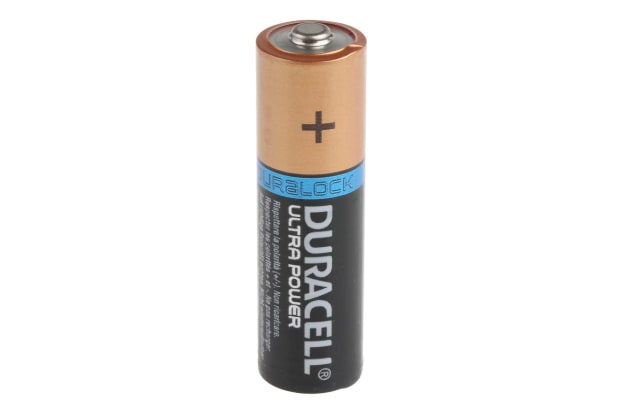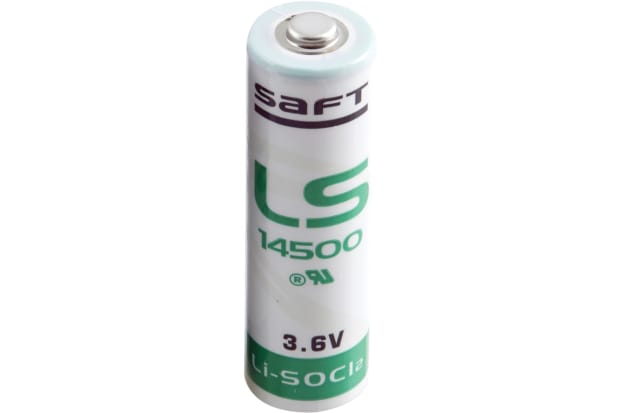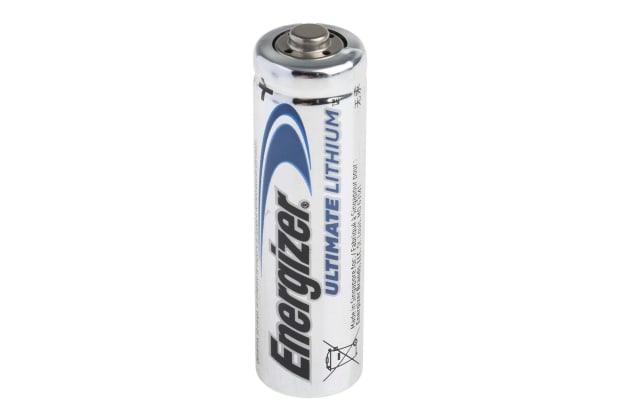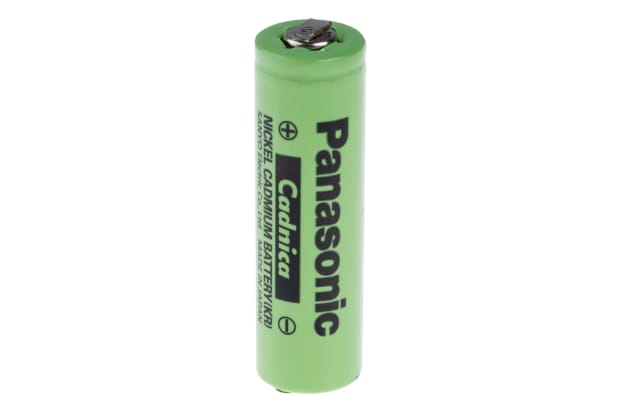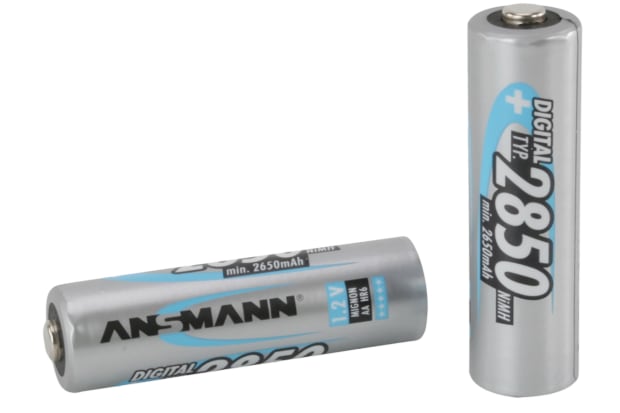- Published 13 Jan 2023
- Last Modified 29 Aug 2023
- 18 min
A Complete Guide to AA Batteries

What are AA batteries?
AA batteries are one of the most common types of swappable power cells in circulation today. They’re what many of us typically picture when we think of the ‘classic’ size and shape for a standard replaceable battery.
Often used in single cell devices, or combined into pairs (or larger multiples) for powering larger but still relatively portable consumer electronics, AA batteries are incredibly versatile and very widely available almost everywhere in the world.
In this guide, we’ll give a rundown of numerous AA battery types, material variants and performance guidelines. We’ll also be looking at some common usage scenarios and frequently asked questions for AA batteries, to help clarify how to get the best from your cell-powered devices while continuing to use them safely and economically.
Popular AA Batteries
Shop our best selling AA batteries using the links below:
Different types of AA batteries
The first thing to note when looking to buy AA batteries in the UK is just how many different sorts you’ll find on sale from a wide range of manufacturers, suppliers and retailers. In fact, you can buy ‘standard’ AA batteries - disposable alkaline 1.5V versions - almost anywhere you look, and more often than not they’ll work in most types of consumer electronic devices.
But when should you just take the first available option, and in which scenarios does it pay to shop around a little more? In this section we’ll explore some of the most common AA battery types sold in hardware stores, electrical retailers, supermarkets, petrol stations and newsagents all over the UK, and suggest which sorts are best for which applications.
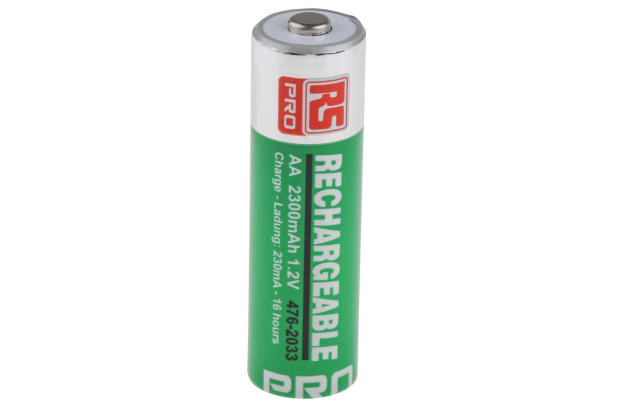
Rechargeable AA batteries
Rechargeable AA batteries are extremely commonplace these days; you’ll find them on sale in almost as many places as you’ll find non-rechargeable variants. While other chemistry types are available, NiMH is almost certainly the commonest variant of rechargeable AA battery you’ll encounter today (the once widespread NiCd types are now increasingly viewed as somewhat obsolete, thanks to being both fairly low capacity and toxic).
For convenience and long-term cost-effectiveness, it’s hard to beat rechargeable AA batteries in many day-to-day uses. They’re often sold bundled together in multiples of two or four cells complete with a charger, although it’s just as common to find any number of the batteries themselves - or indeed the requisite chargers - sold separately.
Rechargeable AA battery packs are also a widely available option, in which multiple identical rechargeable AA cells are combined together to form a single larger battery. Rechargeable battery packs are generally suitable for use in a wide range of devices that require more than one or two batteries to operate, provided of course that you can find a pack in the right configuration to fit the device in question.
Common pack configurations include 4, 5, 6, 12 or 24 AA batteries assembled in series, in parallel, or in a combination of the two. Rechargeable battery packs usually feature secondary wrapping or plastic end caps placed around the cell grouping, in order to keep them in their intended layout. Additional interconnects and terminals are wired in to provide managed power-flow between the numerous cells in the pack, allowing for more evenly balanced delivery across a single combined circuit.
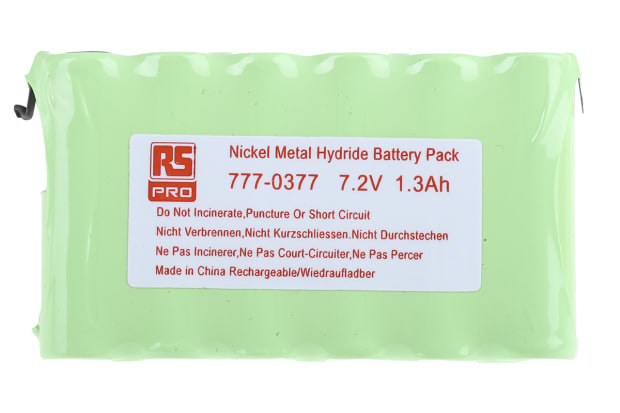
The advantage of rechargeable AA battery packs is that they behave much like a single cell in terms of swapping them in and out. For devices requiring multiple batteries to power on, this is much more convenient than having to remove each individual cell one by one when you need to charge or replace them.
Good quality rechargeable battery packs are usually assembled such that all the individual AA cells in the pack are functionally identical, reasonably balanced, and can be charged and discharged at similar rates to one another over their active lifetimes. This is better and safer for both the batteries themselves, and the long-term health of the devices they’re powering.
When various batteries working together are unable to discharge at equal or consistent rates, some cells can end up being placed under excessive workloads as they struggle to compensate for weaker performers. Combining loose or non-identical rechargeable AA batteries - particularly of different ages and active cycle capacities - in a single device can, therefore, lead to power or stability issues, which is why battery packs are generally a far better option in this scenario.
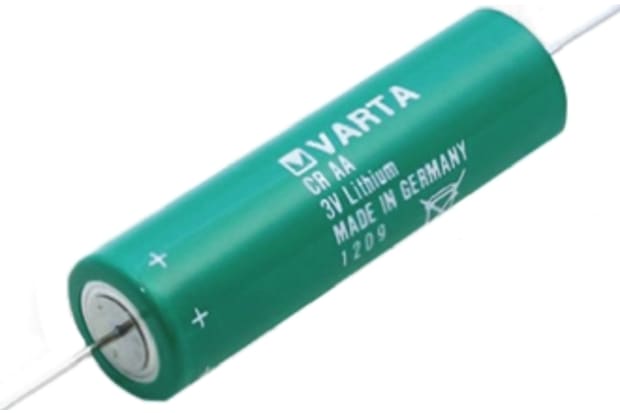
Lithium AA batteries
When it comes to discussing AA lithium batteries, it’s important to make a key distinction between lithium and lithium-ion cells. The latter, usually abbreviated to ‘li-ion’, are the extensively rechargeable versions you often find built into mobile phones, laptops, drones, vaping devices, and a broad catalogue of other high-drain consumer electronics products.
These Li-ion cells combine lithium with other compounds and almost always appear in significantly different form factors (often large, flat and rectangular) than the familiar size and shape of button-top AA batteries. Li-ion cells operate at significantly higher voltages than most AA battery types, and must never be placed in a charger designed for AA-type NiMH or alkaline batteries. Many battery types placed in the wrong charger may eventually leak or rupture, but Li-ion cells can ignite with shocking violence if mishandled badly enough.
A standard AA lithium (non-ion) battery, on the other hand, is not intended to be rechargeable in the first place. Instead, what pure lithium chemistry offers in AA format is an especially powerful and very long-lasting cell type. Lithium AA batteries are a solid choice for more robust shorter-term use in high-drain equipment such as digital cameras, or even better in low-drain devices that need to be powered on for very long periods of time. They’re ideal in smoke alarms, for example, where the average power draw is very low and where extreme long-term stability is key.
AA lithium cells have a shelf life of up to 9 years, and they can last a far longer time than most other AA types in the right sorts of devices. Importantly for the health of your valuable electronics, lithium AA batteries don’t leak over time, unlike many cheaper varieties.

Alkaline AA batteries
AA alkaline batteries are very much the ‘standard’ type, sold incredibly widely in all sorts of places, and are usable in almost any relatively low-powered consumer electronics device.
Wall clocks, non-mains accent lighting, cordless phones, smaller flashlights, TV remotes, games and toys, handheld kitchen or grooming gadgets, and various sorts of portable audiovisual technologies all rely on alkaline AA batteries to deliver economical mid-tier cell power. And, for the vast majority of these products, alkaline chemistry will get the job done cheaply and effectively.
The key advantage of a standard, non-rechargeable AA alkaline battery is that it’s immediately available, very cost-effective in the short-term, and suitable for such a broad range of low-drain devices that it’s essentially the default option for many people. Come to think of it, it’s very likely you’ll have a few spare alkaline AA batteries lying around at home right now. However, if you haven’t used them in a while, it might be worth checking what condition they’re in.
Unlike lithium AAs, some degree of leakage over time is fairly inevitable from alkaline batteries as they slowly self-discharge in tiny increments. Moreover, if you regularly use AA battery-powered devices and find yourself having to replace cells fairly often, then alkalines probably aren’t offering you the best bang for the buck - you may be overdue a switch to rechargeables for considerably improved long-term economy.
While not typically rechargeable in most cases, you can buy rechargeable alkaline AA batteries, and indeed they have a longer shelf-life than many other AA rechargeable types. The downside is that rechargeable alkalines can’t handle a great many drain cycles before their capacity starts to drop quite quickly, so they may not be the best choice for devices you want to use every day.
FAQs about AA batteries
How long do AA batteries last?
When trying to figure out which AA batteries last the longest, there’s no hard and fast answer; it’s something of a ‘how long is a piece of string?’-type question. In practical terms, it will depend entirely on a wide range of factors, including:
- The application you’re using the batteries for, and the environment/conditions you’re using them in
- The type of equipment they’re installed in (especially high-drain vs. low-drain)
- The nominal voltage of the cell type in question, which for AA cells will usually be either:
- 1.5V, the standard nominal voltage for batteries of this size (AA 1.5V batteries are the most common and widely available versions, particularly of alkaline and zinc-carbon cells)
- 3v/3.6V, both reasonably common nominal voltages in batteries intended for use in high-drain applications (lithium cells are commonly sold as 3.6V AA lithium batteries)
- Whichever nominal voltage of AA batteries you’re buying, be certain that the device you’re intending to power specifies accepting units of that rating; using underpowered cells will result in performance issues, while overpowered batteries can easily damage components and circuits
- How intensive the workload they’re placed under is, and for how long at a time they’re kept in active use
- The quality of a given brand’s manufacturing processes and materials
Calculating and comparing expected AA battery life is an inexact science - or rather, it’s one with so many possible variables that it doesn’t always appear a like-for-like comparison once you start weighing up different cell chemistries for different usage scenarios.
With that said, the basic rules of thumb are as follows:
Standard alkaline AA batteries
- Won’t typically last very long in high-drain devices such as digital cameras; they can’t output their full power fast enough to cope with the demands of high-drain electronics especially well
- Can be prone to leaking when over-taxed or kept for long periods of time
- Are much better used in low-drain devices with fewer major spikes in power draw to content with
- Have a reasonably long shelf life when not installed, and are among the most economical types of AA battery in the short-term
Lithium AA batteries
- Much better than alkaline at coping with high-drain demands, and can last for years in the right sort of device
- Have a particularly long shelf life, and won’t leak over time
- Aren’t typically available in rechargeable varieties (see the comparison with lithium-ion versions, above)
- Tend to be more expensive than AA alkaline cells
Rechargeable AA batteries
- Likely a better bet for any devices that are going to be in heavy and/or regular use for extended periods of time, especially with higher-drain circuits
- Tend to be more costly in the short-term, but quickly become much more cost-effective than single-use cells (even budget alkaline disposables) if you’re going to be draining them quickly and regularly
- Are best bought in multiples of the amount needed for the device in question, so there’s always a replacement set charged and ready to go
- Will require a discrete charger, either bought separately or supplied as part of a bundle
Can AA batteries explode?
We’ve touched on the dangers of mistreating certain high-drain rechargeables - particularly li-ion batteries - in previous sections, but what about regular disposable AA batteries? Can they explode or rupture in dangerous ways? Well, while it’s very rare indeed for AA batteries to explode in typical day-to-day use, ruptures or even small explosions aren’t impossible.
When a standard AA alkaline battery is inserted into a circuit and starts to deliver power, there’s actually a chemical reaction taking place within the cell that produces small amounts of hydrogen gas. Most AA batteries from quality brands will be vented to allow for this. However, the fact that this gas is being generated under pressure inside a sealed metal chamber means that, should a product malfunction or be placed in a situation it’s not equipped to handle, issues can occur.
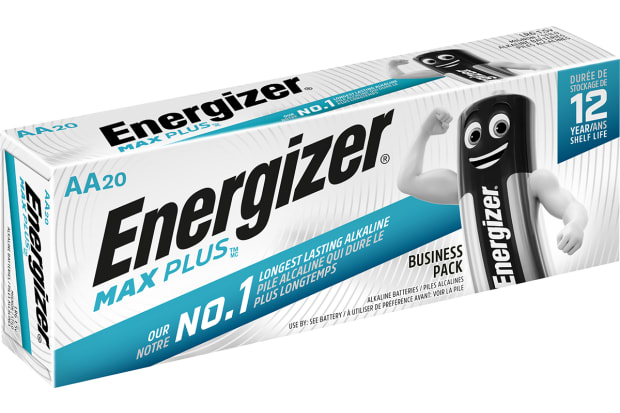
In most cases an AA battery will only rupture violently if it’s inserted in the wrong direction, exposed to high operating or storage temperatures, mixed with other cells of the wrong type or very different capacities/charge levels, or if a user attempts to (re)charge a cell that isn’t designed to do so.
Even outside of these scenarios, though, a very small number of substandard or faulty cells can potentially burst due to less clear-cut misuses. One of the more common causes of leaking or rupture in alkaline AA batteries is running a fresh cell alongside a heavily drained one - on rare occasions, this can end up effectively reversing the polarity on the drained cell, which can quickly cause problems.
For most AA batteries, ‘exploding’ usually means a loud ‘pop’ sound and ejection of corrosive materials. When alkaline, NiMH and even lithium AA batteries rupture, the force and heat of the explosion isn’t anywhere near that of, say, an explosive li-ion failure - although it’s still potentially hazardous to users, and the causes should be investigated when safe to do so, along with contacting the manufacturer or supplier.
If you’re ever faced with a badly leaking, ruptured or exploded alkaline AA battery, the best procedure is to immediately and carefully wash all traces of ejected material off your skin. Once this has been done, any traces of this remaining lye material should be neutralised with a household acid such as vinegar or lemon juice - but only do so after removing as much material as possible with water, otherwise, an exothermic chemical reaction can occur, generating more heat.
If any material has made direct contact with your eyes, wash them thoroughly and seek medical advice. Once you’ve taken care of yourself, it’s important to clean any leaked material off components and contacts in the battery enclosure, as it can damage devices irreparably if left to degrade the metals. Again, vinegar or lemon juice on a cotton bud will be effective here, as will careful scraping with a flat screwdriver for any stubborn residue.
Are AA batteries allowed on planes?
Yes, AA batteries are allowed on planes, although there are some caveats and best practices you should be aware of:
- Dry-cell batteries, which include alkaline, lithium and NiMH rechargeable AA batteries, are allowed in carry-on luggage (both inside devices and as spares)
- With the exception of spare lithium AA batteries, which must only be carried on board, all of the above are also allowed in checked baggage
- However, it’s generally not recommended to put spare batteries in checked baggage if you can possibly avoid it - it might seem counterintuitive, but in the unlikely event of a problem, you’re far safer having them with you in your carry-on luggage where they can be accessed by staff trained to deal with such issues
- All spare batteries carried outside devices should be packed in a protective plastic case, individual plastic bags, or at the very least have their contacts taped over for the duration of air travel
- Never carry loose batteries in bags containing other metal objects (including coins, paper clips, zips etc), as this can cause them to short-circuit and become dangerously hot
- Consult your airline for advice regarding any spare rechargeable Li-ion batteries - these are generally allowed as carry-on, but are often subject to strict size limits
How do you store AA batteries?
Many AA batteries today boast impressively long shelf-lives, which is especially useful given that you can often enjoy considerable discounts when buying in bulk or larger multipacks. However, achieving optimal shelf-life for most AA cells depends on proper care and storage.
Tips to be mindful of when considering how to store AA batteries long-term include:
- Keep them out of the reach of children
- Ensure they’re stored in a cool and dry environment (room temperature or below)
- Where possible, keep them in their original packaging until ready for use - this not only helps to protect unused cells, but also differentiates them from older or partially drained units
- Don’t store batteries inside devices if you’re not going to be using them for a long time
- If you’re storing a mixture of brand new and partially used batteries, keep them separate and clearly labelled
- Make sure they’re unable to short circuit through direct contact with any other metal items - use a plastic battery storage box, individual plastic bags, or put tape over the terminals
- Periodically test and top-up rechargeable AA batteries, if they’re going to be stored for a long time, as letting them fully discharge in storage, can seriously deplete their capacity
- Never disassemble, puncture, crush or burn batteries of any kind
- Never store rechargeable batteries inside a charger, and never attempt to recharge a battery that’s not designed to do so
Why do AA batteries leak?
Batteries eventually leaking or corroding is a relatively common occurrence, especially familiar with alkaline AA cells if they’re left unattended for long enough. In short, the reason alkaline batteries leak is that they’re continually self-discharging in tiny increments, even when not in use.
Because the discharging process in alkaline batteries creates small amounts of hydrogen gas, pressure gradually builds within the sealed casing of the battery, and in time a small amount of material from inside the cell will often be ejected under this mounting pressure. This material is usually corrosive and should be removed from the skin immediately, then cleaned away from electrical components as soon as possible after that.
The best way to avoid leakage is to regularly replace older batteries, take note of the battery storage best practices outlined in the section above, and to switch to lithium or rechargeable cells for long-term storage if you only need to power a device very occasionally.
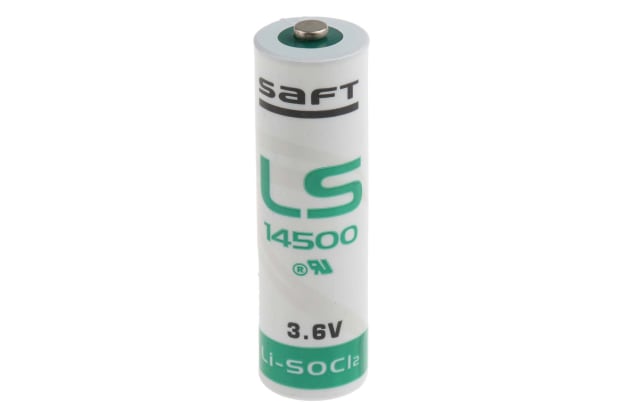
Are AA batteries recyclable?
As a quick point of note here, it’s actually a popular misconception that all batteries necessarily need to be recycled. Most do, and all should be - but it’s not absolutely essential with every type.
While nearly all rechargeable batteries do indeed need to be sent for recycling, it is in fact perfectly safe to throw out single-use alkaline batteries along with your other household waste. If you insist on doing so, always ensure they’re not likely to short-circuit on any other metal items such as cans and foil when disposing of them.
However, just because you can, it doesn’t mean you ought to: in reality, nearly all AA batteries (including basic alkaline disposables) contain a significant proportion of materials that, wherever feasible, should always be recycled for the long-term benefit of the environment.
When recycling batteries, they aren’t generally considered suitable for disposal in domestic collection bins. The easiest way to recycle any type of AA battery is generally to return it to the point of purchase next time you need to buy more: nearly everywhere that sells AA batteries will also have a collection point for old ones. Failing this, your local collection network will generally feature a drop-off facility at the nearest depot, and often in a number of other locations around the community.
Summary
AA batteries are such a staple of everyday life that we often tend to purchase them without thinking much beyond the short-term, or stopping to consider what sorts of options might be available for giving our devices better performance or offering us better long-term cost-effectiveness.
However, it pays to look a little more closely into the various different chemistry types, voltages, shelf lives and recommended storage conditions for all kinds of AA batteries when deciding which cells to buy, use and reuse from a broad range of suppliers and manufacturers.
If you’d like any more advice or information on AA batteries, chargers and other accessories available in the UK, then feel free to contact a member of our expert support team any time.
Use the links below to view some of our popular brands:
